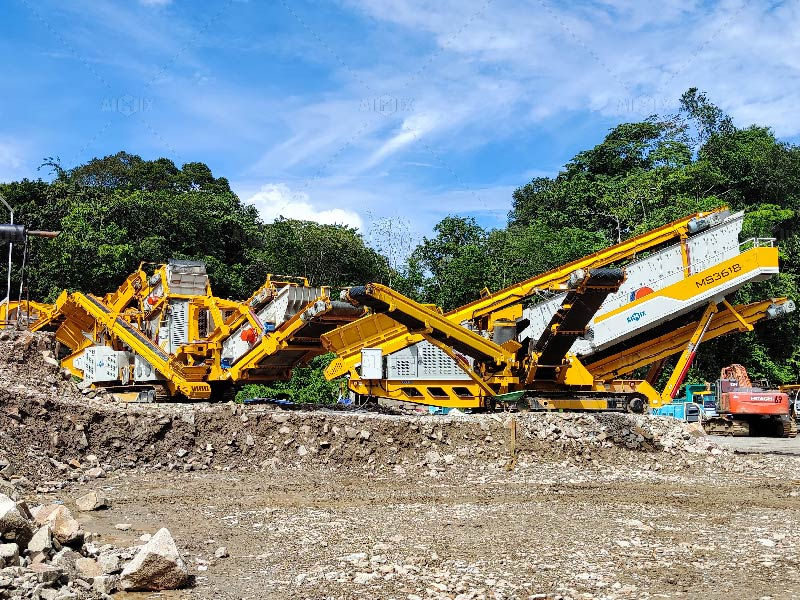What Are the Characteristics of Construction Aggregates?
- info515452
- 4月24日
- 讀畢需時 3 分鐘
Construction aggregates are indispensable materials in the building and infrastructure sectors. These aggregates—made from sand, gravel, crushed stone, or recycled concrete—are used in nearly every type of construction project, from road building to residential development. But what makes a good aggregate? And how do different characteristics influence the performance of the final structure?
In the mining and aggregate industries, the quality of construction aggregates determines the strength, durability, and longevity of the end product. Below, we’ll explore the main characteristics of construction aggregates and how they impact performance in various applications.
Importance of Aggregate Characteristics
Understanding aggregate characteristics is essential for engineers, contractors, and producers alike. The physical and mechanical properties of aggregates directly affect concrete workability, asphalt stability, drainage capabilities, and structural performance. These properties also influence processing decisions, such as the choice between a stationary aggregate crusher plant(chancadora de agregados), a crawler type stone crusher, or a portable stone crusher in the field.

Physical Properties of Construction Aggregates
1. Particle Size and Grading
The size distribution of aggregate particles—referred to as grading—affects the density, compaction, and strength of the final mix. Well-graded aggregates contain a good mix of fine and coarse particles, resulting in better packing and reduced voids.
Uniformly graded materials may be easier to process but often require more cement or binder to fill gaps, which can increase costs.
2. Shape and Texture
Aggregate particles can be rounded, angular, flaky, or elongated. Angular aggregates, typically produced by a crawler type stone crusher(trituradora de piedra de oruga), offer better interlocking and are ideal for high-strength concrete and road bases.
On the other hand, rounded aggregates, often found in river deposits, improve workability but reduce mechanical strength. Rough-textured aggregates also bond better with cement paste, enhancing durability.
3. Specific Gravity and Density
Specific gravity indicates the aggregate’s relative density compared to water. A higher specific gravity often correlates with better strength and stability. This property helps engineers estimate loads and calculate mix proportions accurately.
Bulk density, influenced by both specific gravity and particle arrangement, affects storage and transportation decisions.

Mechanical Properties of Aggregates
1. Strength
Aggregate strength is crucial in load-bearing structures. It is measured through tests such as the aggregate crushing value and Los Angeles abrasion test. Materials processed through a modern aggregate crusher plant usually exhibit high strength and resistance to crushing.
Hard rocks like basalt and granite are preferred for demanding applications such as highways and bridge decks.
2. Durability
Durability refers to the ability of aggregates to resist weathering, freeze-thaw cycles, and chemical exposure. Durable aggregates extend the life of concrete structures and reduce maintenance costs.
Materials with high silica content, for instance, are more chemically stable and less prone to degradation.
3. Toughness and Impact Resistance
In heavy-duty environments, aggregates must withstand repeated stress and dynamic loads. Impact resistance ensures the material doesn’t fracture or degrade prematurely. Quarry operators often rely on portable stone crusher(chancadora portatil) units to test and process different materials on-site to find those that meet toughness standards.
Chemical and Thermal Properties
1. Alkali Reactivity
Some aggregates contain reactive silica or carbonates that can react with cement alkalis, leading to expansion and cracking in concrete. Identifying and testing for alkali-silica reactivity (ASR) is crucial to avoid long-term damage.
2. Thermal Stability
Aggregates used in high-temperature environments, like asphalt pavement, must resist expansion and breakdown. Rocks like granite and basalt offer excellent thermal stability and are frequently processed using advanced aggregate crusher plant setups to ensure consistent performance.
Role of Aggregate Processing Technology
The type of crushing equipment used greatly influences the final characteristics of the aggregates. A crawler type stone crusher is perfect for rough terrain and large-scale mining operations, providing high-capacity and efficient crushing of hard materials. Meanwhile, a portable stone crusher allows for on-site crushing, making it ideal for remote or temporary projects. Both types are instrumental in producing aggregates with desirable shape, size, and mechanical strength.
Final Thoughts
Construction aggregates are more than just fillers—they play a vital role in the strength, stability, and longevity of structures. From particle size and texture to strength and chemical properties, every characteristic matters. Advanced processing methods using aggregate crusher plant, crawler type stone crusher, or portable stone crusher units ensure that these aggregates meet the highest industry standards.
As infrastructure projects grow in complexity and demand, the mining and aggregate industries must continue to prioritize quality, sustainability, and efficiency. Understanding the characteristics of construction aggregates is the first step toward building a more durable and reliable future.






留言